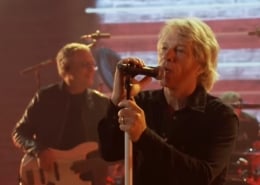Wembley Hospitality at Wembley Stadium
Europe’s Second Biggest Stadium
Wembley Stadium is the number one destination for football in England, with its influence spreading throughout British sport and culture. Wembley is one of the largest stadiums in the world, providing an unforgettable experience for sports spectators.
This famous sport and music venue celebrated it’s 100th birthday in 2023, and it still continues to host some of the biggest sporting and music events on the planet, which it has done so since it was founded all the way back in April 1923.
Many iconic events have been held at Wembley, from the world’s most significant music acts to intense football matches. The most distinctive aspects of the venue are its twin towers and the 29 steps to the Royal Box that the players climb to receive their trophies. The stadium hosted the London 2012 Olympics, the 1948 Summer Olympics and the 2015 Rugby World Cup. It now also hosts NFL Regular Season matches on an annual basis, and has been the venue for several boxing world-title fights.
Wembley continues to be the home of English Football, with the Senior England Men’s team playing their football under the famous arch. It also hosts the FA Cup Semi-Final and Final, as well as the Carabao Cup Final each and every season.
England will be playing Serbia at Wembley in the FIFA 2026 World Cup Qualifiers after beating Latvia 5 – 0 in their previous game, which secured their place at the tournament.
When it comes to the world of concerts, then Wembley Stadium is the place to be. In 2026, it is confirmed to be hosting gigs from some big names in the world of music – Luke Combs and Bon Jovi.
On top of this, the annual Capital FM Summertime Ball is also hosted at this famous stadium.
It will be the Jacksonville Jaguars played their 2025 NFL London fixture under that famous arch at the equally iconic Wembley Stadium. They were defeated 35 – 7 by a Matthew Stafford inspired Los Angeles Rams in the end.
This page will be updated once the dates and their opponents have been officially confirmed for when the NFL returns to London in 2026!
Feel free to Register Your Interest, you can call us on 020 7989 6500.
NFL London 2026 – Wembley Stadium
Concerts – Wembley Stadium
Luke Combs – My Kinda Saturday Night Tour – Wembley 2026
Luke Combs is one of the world’s leading country music artists, and he is set to take London by storm when he performs some of his most iconic songs at Wembley Stadium. He will be performing at this iconic venue as part of his ‘My Kinda Saturday Night’ Tour on Saturday, 1st August 2026.
At the time of writing, the American artist has amassed almost 25.5 million monthly streams on Spotify. Combs will be supported on the night by the likes of Thomas Rhett, Ty Myers, and The Castellows.
Combs’ most popular songs includes ‘The Kind of Love We Make’, ‘Fast Car’, ‘Where the Wild Things Are’, ‘When It Rains It Pours’, ‘Ain’t No Love in Oklahoma’, ‘Beautiful Crazy’, ‘She Got the best of Me’, ‘Beer Never Broke My Heart’, and ‘Forever After All’.
He also collaborated with Post Malone in his 2024 album ‘F-1 Trillion’, where Combs features on the tracks ‘Guy For That’ and ‘Missin’ You Like This’. Please call us to register your interest on 020 7989 6500.
There is no better way to enjoy this concert in some style at the iconic and historic Wembley Stadium than with an Eventmasters VIP Hospitality Package.
Bon Jovi – Forever Tour – Wembley 2026
Bon Jovi is one of the biggest rock bands on the planet, founded in 1983. They are set to take London by storm when they perform at the iconic and historic Wembley Stadium located in the heart of the English Capital as part of their upcoming and much-anticipated Forever Tour, on Friday 4th September, Sunday 6th September, and Wednesday 9th September 2026.
The band is a Grammy Award Winner, and they were also inducted into the highly prestigious Rock And Roll Hall of Fame back in 2018.
Bon Jovi’s most popular tracks includes, ‘Livin’ On A Prayer’, ‘You Give Love A Bad Name’, ‘It’s My Life’, ‘Always’, ‘Bed Of Roses’, ‘Runaway’, ‘Wanted Dead Or Alive’, ‘I’ll Be There For You’, ‘Bad Medicine’, and ‘Keep The Faith’.
On Spotify, their music collectively has more than 30.6 million listeners per month, with the aforementioned ‘Livin’ On A Prayer’ currently the most popular, with more than 2 million streams per month. It is closely followed by ‘You Give Love A Bad Name’ (more than 1.4 million streams a month) and ‘It’s My Life’, which has more than 1.1 million listens per month as of the time of writing.
There is no better way to enjoy a performance from Bon Jovi in some style at the iconic and historic Wembley Stadium than with an Eventmasters VIP Hospitality Package.
Travelling to Wembley Stadium
For more information, please refer to the Google map shown.
How do I get to Wembley by car?
When approaching the A406 North Circular from the M1, A40, or M25, we recommend following the signs for Wembley Stadium. Drive north-west on Harrow Road (A404) until you reach Paddington Station, then turn right onto the A40. Turn right onto Wembley Hill Road when you arrive at Wembley Central Station and follow the signs.
How do I get to Wembley by train?
Guests can use the London Underground and Metropolitan lines to travel to Wembley Park Station. If guests want to travel to Wembley Stadium Station, we advise you to use the Chiltern Railways.
Alternatively, the Bakerloo line of the London Underground, the London Midland and Southern lines, and the London Overground are good options for getting to Wembley Central Station.
How do I get to Wembley by bus?
We recommend guests use the 18/N18, 83/N83, 92, 182, 206, 223, 297, and 483 serve bus routes throughout North West London and from Central London when travelling to Wembley.
Wembley Stadium FAQs:
Where is Wembley Stadium located?
Wembley is amongst the most famous stadiums not just in the United Kingdom, but also in the world – it also has that iconic arch. Below is its address in full:
Empire Way, Wembley, London, HA9 0WS.
What is the capacity of Wembley Stadium?
At present, Wembley Stadium currently has a seated capacity of no less than 90,000 – it’s the largest sports venue in the UK, and it is also the second largest stadium in the continent of Europe.
What are the most convenient transport links to Wembley Stadium?
No less than three stations that serve Wembley Stadium. Starting with Wembley Park Station, which is on the London Underground Jubilee and Metropolitan Lines, there is also Wembley Central Station that is on the Underground Bakerloo Line, the London Overground, and the London Midland and Southern Lines. There is also Wembley Stadium Station, which is served by Chiltern Railways.
Wembley Park Station is approximately a 15 minute walk from the stadium, whilst Wembley Central Station is about a 20 minute walk away. Wembley Stadium Station is the closest, at just under a 10 minute walk.
All three of these stations have step-free access and low level ticket machines as well.
If you are arriving by car, there is official stadium parking that must be booked in advance. The same applies to Blue Badge holders, who must also pre-book a parking space.
There are a vast number of bus services that serve Wembley Stadium. These include the 18/N18, 83/N83, 92, 182, 206, 223, 297, and finally 483 – they all serve routes across North West London and to and from Central London.
What makes Wembley Stadium special?
Wembley is referred to as ‘the home of football’, and it is where England’s national men’s and women’s teams play their home games. It also famously hosts the Final of the FA Cup – the oldest domestic cup competition in the world – as well as the League Cup Final.
It also hosted the Final of EURO 2020, and Wembley has also hosted eight UEFA Champions League Finals, doing so back in 1963 (AC Milan 2 – 1 Benfica), 1968 (Man United 4 – 1 Benfica), 1971 (Ajax 2 – 0 Panathinaikos), 1978 (Liverpool 1 – 0 Club Brugge), 1992 (Barcelona 1 – 0 Sampdoria), 2011 (Barcelona 3 – 1 Man United), 2013 (Bayern Munich 2 – 1 Borussia Dortmund), & 2024 (Real Madrid 2 – 0 Borussia Dortmund).
Wembley does not just host football – it has seen concerts from some of the world’s biggest and most successful artists perform there, whilst NFL regular season matches, Boxing matches, and rugby contests have all also been staged at Wembley over the years. It also, of course, hosted several events during the 2012 Olympic Games in London.
Wembley first opened in 1923 and hosted England’s 1966 World Cup win, and also the iconic Live Aid Concert back in 1985. The current iteration of Wembley was opened in 2007, with its incredible, famous arch standing at 133 metres high, and it has since become one of the most famous landmarks in London.
What accessibility features does Wembley Stadium have?
On every level of the stadium, there will be accessible seating – in total, there are as many as 310 places for wheelchair users, which all come complete with a seat for a personal assistant/companion. There are also stewards who will be on hand to help if required.
It is also possible to loan assisted listening devices, wheelchairs, whilst there are RADAR keys to access the accessible toilets – there are 147 in total, and if you do not possess a RADAR key, you can ask a steward or a member of the Customer Engagement Team for help.
There are also lifts and escalators on the concourse, and levels 1, 2, 3, 4, and 5, whilst there is also signage and visual indicators to aid in navigation.
Additionally, induction loop facilities are available at all information desks and are available for sporting events, but not for concerts. If audio descriptive commentary is needed, a receiver can be picked up from an information booth located closest to your seat.
There is also free BSL (British Sign Language) interpretation for every concert, with interpreters located in front of Block 123, with guests sitting in three rows in front of them.
There are two dedicated sensory and inclusion rooms that are located on the northwest and northeast corners of level four, with both accessible by two wheelchair users, with a total capacity of 12 guests each.
How can I get in touch regarding VIP Football Hospitality for a Premier League match?
There are a number of ways of getting in touch regarding our VIP Hospitality Packages for any of our Premier League clubs. You can either fill in a contact form at the bottom of the page, or you can alternatively call our dedicated sales team on either 020 7989 6500 or 0121 233 6500.
Discover More About Wembley Stadium
Wembley Stadium History
The original Wembley Stadium opened in April 1923 and has since been synonymous with England’s spectacular World Cup victory in 1966 and the nail-biting thriller of Euro 96. The stadium was constructed for the 1924 British Empire Exhibition, taking over 300 days to complete, costing over £750,000. The stadium was set to be demolished after; however, Sir James Steveson, a British industrialist and government servant, advocated that it remain open as football has been played there since the 1880s. With the support of King George V, the stadium was officially opened and was recognised as ‘hallowed turf’.
Many iconic events have been held at Wembley Stadium, including the London Olympics in 1948, the 1966 England World Cup win and the 1923 FA Cup final, which is now recognised as the White Horse final. While being the home of football, Wembley has also hosted many famous concerts, such as Freddie Mercury’s Live Aid show in 1985 singing “Bohemian Rhapsody” and “We Will Rock You”. In 2012, the Olympics was hosted at Wembley, becoming the second-largest Olympic venue globally.
Local attractions
Wembley Stadium Tours
Take a look around Wembley Stadium to get the football insight from behind the scenes. Experience where the players prepare for matches, sit in England’s manager chair and hold the trophy like a winner. Experience the UK’s finest stadium and relive some of the greatest moments in Wembley’s history.
Royal Air Force Museum
The Royal Air Force Museum is a fun day out for all the family! With free entry, guests can learn about the brave men and women remembered for their courage and strength during WW1 and WW2.
Osterley Park
Once known as ‘the place of palaces’, Osterley’s purpose was to entertain friends and clients in the late 18th century. Enjoy the colourful gardens, herbaceous borders, roses and ornamental vegetable beds. Don’t forget to relax on the temple lawn and uncover the forgotten boathouse during your visit.
More Events at Wembley Stadium
There is plenty to explore at Wembley Stadium. Guests can discover the history behind the venue, learn about British culture, and enjoy Wembley’s unique events throughout the year!
Interested in our Wembley Hospitality Tickets for 2025?
Wembley
Our Hospitality Team are ready to help you plan your day at Wembley Stadium - Complete this contact form and one of our Hospitality Specialists will be in contact shortly.
Click here to add your own text



